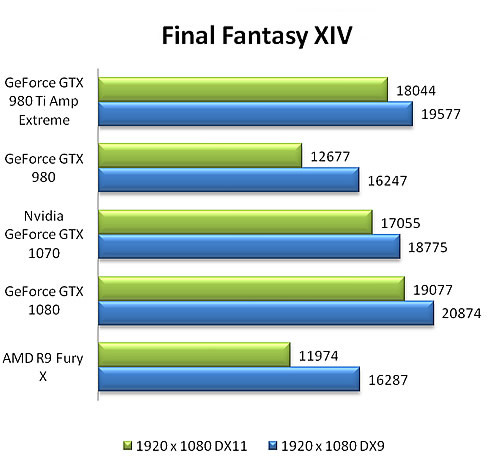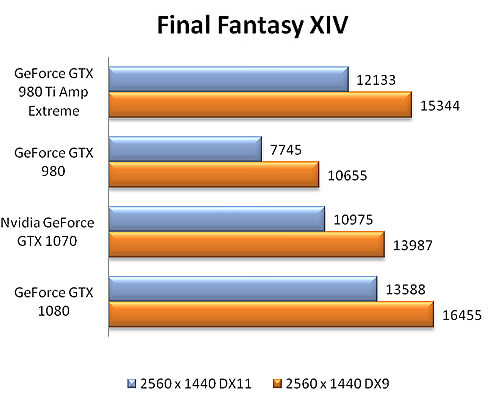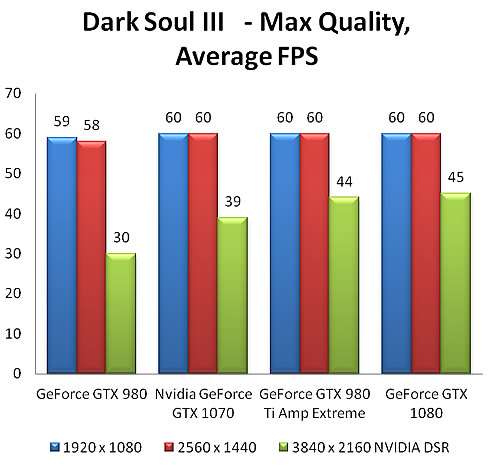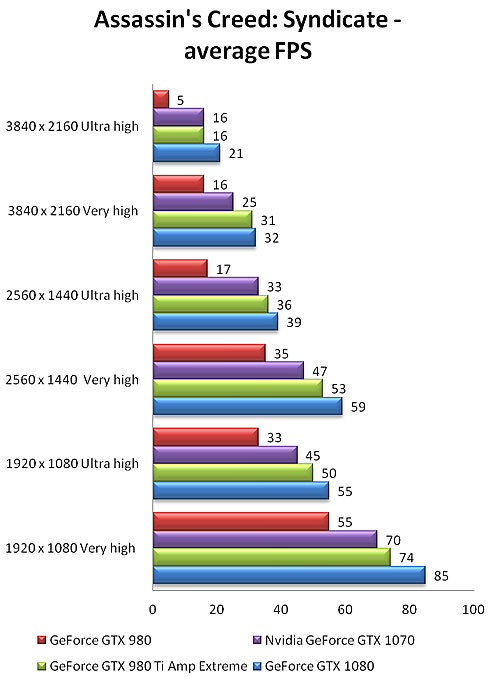1. Meet the Nvidia GeForce GTX 1070
The Nvidia GeForce GTX 1070 will be officially released June 10, and we had the chance to run some benchmarks on Nvidia's latest Pascal-powered graphics card.
Nvidia's GeForce GTX 1080 graphics card proved to be a new champion for desktop gaming, providing a significant bump in graphics power compared to the GTX 980, GTX 980 Ti and GTX Titan X. But for many PC gamers unwilling to spend $600 to $700 on a new graphics card, Nvidia is offering the new GTX 1070 solution, which will be priced at $379 to $449 when it hits the market.
The GeForce GTX 1070’s power stems from the same source as the GTX 1080’s: Nvidia’s Pascal GPU. Pascal - and forthcoming Radeon cards based on AMD’s Polaris GPUs are leaping forward two full process generations, shrinking down to 16nm transistors and integrating 3D "FinFET" technology as well. As we saw in our GTX 1080 preview, Pascal GPUs represent a huge step forward in performance and power efficiency.
The GTX 1070 features the same "GP104" Pascal GPU as the bigger brother, but with five of its 20 Streaming Multiprocessor units disabled. That leaves it with 1,920 CUDA cores and 120 texture processing units, but Nvidia left the GPU’s full complement of 64 render output units (ROPs) intact. The GTX 1070’s clock speeds have also been decreased down to a 1,506MHz base clock and 1,683MHz boost clock, but that’s still superior to the previous-generation GTX 980, which topped out at 1,216MHz boost clocks, while AMD’s Radeon R9 390X topped out at 1,050MHz.
Another key difference from the GTX 1080 is the GTX 1070’s memory. While the GTX 1080 adopted the brand new GDDR5X memory clocked at 10Gbps, the GTX 1070 employs 8GB of traditional GDDR5 RAM over a 256-bit bus instead, clocked at 8Gbps for an effective memory bandwidth of 256GBps.
|
GeForce GTX 1080 |
GeForce GTX 1070 |
GeForce GTX 980 |
ZOTAC GeForce GTX 980 Ti AMP! Extreme |
| Architecture |
Pascal (GP104) |
Pascal (GP104) |
Maxwell (GM204) |
Maxwell (GM200) |
| Manufacturing process |
16nm |
16nm |
28nm |
| GPU clock (maximum) |
1,733MHz |
1,683MHz |
1,216MHz |
1,075MHz |
| Cuda cores |
2,560 |
1920 |
2,048 |
2,816 |
| Texture units |
160 |
120 |
128 |
176 |
| Memory |
8GB GDDR5X |
8GB GDDR5 |
4GB GDDR5 |
6GB GDDR5 |
| Memory Clock |
10GHz |
8GHz |
7.0GHz |
| Memory Interface |
256bit |
256bit |
256bit |
384bit |
| ROP units |
64 |
64 |
64 |
96 |
| Board Power |
180W |
150W |
165W |
250W |
Nvidia's Founders Edition of the 1070 looks identical to the 1080 and features the same smaller, less noisy design built around a cooling system that makes use of a radial fan and advanced vapor chamber. The fan exhausts the heat outside the chassis via an aluminum heatsink, three copper heat pipes and a metal baseplate, making for lower system temperatures. And the 1070 does all of this while drawing just 150 watts.



You’ll also find the same single HDMI 2.0b connection, a single dual-link DVI-D connector, and three full-sized DisplayPorts that are DP 1.2 certified, but ready for DP 1.3 and 1.4. The card will be able to power 4K monitors running at 120Hz, 5K displays at 60Hz, and even 8K displays at 60Hz.

Of course, the 1070 will support both overclocking and SLI configurations. As has been the case for the GTX 1080, Nvidia doesn't recommend putting more than two cards in a system, but the company still supports it through an app that can be downloaded on the Nvidia website. And Pascal has a dual-link SLI mode that has both SLI interfaces being used in tandem either to feed one high-resolution screen or multiple displays.
Overclocking on the 1070 will be powered by Nvidia's latest take on GPU Boost.
GPU Boost 3.0 adds the ability to set frequency offsets for individual voltage points, making it much more efficient at boosting power. The new GPU Boost is also designed to accommodate GPU overclocking scanners.
We tested the Nvidia Geforce GTX 1070 Founders Edition using the following PC setup:
| CPU |
Core i7-6700K |
| Motherboard |
ASUS Z170-A |
| Memory |
DDR4-2133 8GB × 2 (15-15-15-35,1.20V) |
| Storage |
256GB SSD |
| Graphics driver |
GeForce 368.13 Driver / GeForce 358.91 Driver |
| OS |
Windows 10 Pro 64bit |
2. 3DMark Fire Strike, Cloud Gate, Sky Diver
In Fire Strike benchmark of 3DMark, the GeForce GTX 1070 returned about the 80-85% of the score delivered by the GeForce GTX 1080.
Compared to the overclocked ZOTAC GeForce GTX 980 Ti AMP! Extreme, the GTX 1070 gave an about 10% lower score, while it was also 1.3x / 1.1x more powerful than the GTX 980 and AMD's R9 Fury X.



In the 3DMark ky Diver and Cloud Gate benchmarks, the GTX 1070 ranked third, behind ZOTAC GeForce GTX 980 Ti AMP! Extreme and of course the GeForce GTX 1080.
Focusing in the Graphics Score of each test, the score difference between the GTX 1070 and the GTX 1080 was roughly 20%, in favor of the GTX 1080.
The GTX 1070 lagged about 10% behind the ZOTAC GeForce GTX 980 Ti AMP!, but scored about 30% higher then the GeForce GTX 980 and 20% higher than the AMD R9 Fury X.


3. Witcher 3: The Wild Hunt, Final Fantasy XIV
The FPS results in the Witcher 3: The Wild Hunt benchmark followed the trend we saw in the previous tests. In order to play the game using the GTX 1070 at more than 60 FPS and with Ultra Quality settings enabled, , you should choose the resolution of 1,920 x 1,080 pixels. The card will deliver about 30 FPS at 4K and Ultra quality configuration.

We are moving on to the more demanding Final Fantasy XIV. Again, the GTX 1070 ranks third behind the GTX 1080 and the GeForce GTX 980 Ti AMP Extreme.



The MHF benchmark showed almost the same trend, with the GeForce GTX 1080 to outperform the other GPUs. The rankings in the MHF benchmark remained unchanged, with the GeForce GTX 1070 to be the third fastest card in the test. Notice that the performance lead over the AMD R9 Fury X and the GeForce GTX 980 has been increased at 4K.

4. Dark Soul III, Assassin's Creed: Syndicate, Power concumption
The Dark Soul III game's maximum frame rate is fixed to 60 fps. For this reason, all the cards on the chart below come side-by-side in the lower than 4K resolutions. Obviously, playing the specific game at 2560 x 1440 pixels is the optimal choice for the GTX 1070.

The very demanding Assassin's Creed: Syndicate title always requires high GPU resources in order to be playable. The GeForce GTX 1070 recorded the third highest frame rate in all conditions. Any GPU would find it hard to cope with 4K gaming of the specific title, so using 2-way SLI would make sense here.

Power consumption
We measured the power consumption of the system during the benchmarks with each GPU. Both idle and maximum power figures we recorded.
The consumption of the Pascal -generation cards - both the GTX 1080 and GTX 1070 - at idle state is about 40W, which is 5W less than the idle we recorded for the GTX 980 and 17W less than the idle power consumption we measured with the GeForce GTX 980 Ti AMP Extreme.
The GeForce GTX 1070 was about 30W less power hungry compared to the GTX 1080 during almost all the benchmarks, besides the Dark Seoul III. This difference is reasonable considering the TDPs of the two cards.In the Dark Seoul III benchmark, since the FPS was limited to 60fps, the power of the GeForce GTX 1070-based system consumed at 1,920 x 1,080 just 123W - 10 W less than the consumption of the GeForce GTX 1080.
However, setting the resolution to 2,560 x 1,440 pixels resulting to power consumption of 210 W for the GeForce GTX 1070, while the GeForce GTX 1080 required just 172W.
In terms of power-to-performance ratio, the GTX 1070 continues the tradition of the GT X1080 and crashes the GeForce GTX 980 Ti AMP Extreme, delivering a great benefit compared to the GeForce GTX 980.
5. Summary
In short, the GeForce GTX 1070 will offer you a performance close to an overclocked GeForce GTX 980 Ti, while it consumes significantly less power and will retail for about $380.
Nvidia's latest offering is capable of delivering a 1440p/60fps performance. For more demanding 4K gaming, you’ll get about 30fps, under demanding quality settings, so adjusting them would be necessary in order to get up to 60fps.
If you solely have performance in mid, it's an easy call to upgrade from the 970 or even the 980 to the 1070, but things get a bit trickier if you own a 980 Ti or happen to have a Titan X. According to our tests, the 1070's performance sometimes matches those older cards, but is sometimes beaten by them as well.
Typically, you should expect a Titan X-class power and an almost 25 to 70 percent gain compared to the older GTX 970, depending on the game and the resolution setting. This performance gain becomes almost 20% compared to the GTX 980 and AMD's R9 Fury X. Compared to an overclocked GTX 980 Ti, the GTX 1070 could give 10-15% lower FPS.
However, it's the price tag of the GTX 1070 than could send you to your closest store to buy it. The card - even the $499 Founders Edition - invalidate any reason to buy the Titan X, and also any overclocked GTX 980 Ti custom card as well as AMD’s Fury lineup.
The GTX 1070 hits the streets on June 10. By then, AMD's team is expected to provide details on its new Radeon graphics cards based on its own 14nm FinFET Polaris GPUs, so stay tuned.
